#Modi security policy
Explore tagged Tumblr posts
Text
Modi Heard and Replied Loud and Clear
On April 22, 2025, the quiet town of Pahalgam—nestled in Kashmir’s valley of peace—was shaken by an act of cold-blooded barbarity. A group of Pakistan-sponsored terrorists opened fire on a convoy of Indian tourists, killing 26 innocent people. Most were families—parents, children, honeymooners. They weren’t soldiers. They weren’t combatants. They were citizens who came to admire the mountains and went home wrapped in the tricolour.

#Modi response Pahalgam attack#Operation Sindoor#India Pakistan tension 2025#Pahalgam terror attack#May 7 military strike#cross-border terrorism#Indian retaliation#Kashmir attacks 2025#Modi security policy
0 notes
Text
What are your thoughts on India's geopolitical edge? Share your insights and join the conversation below! We value your perspective.

View On WordPress
#diplomatic bind#disinformation campaigns#fake news#geopolitics#global oil chokepoint#India Foreign Policy#india&039;s geopolitical edge#international relations#Middle East conflict#modi doctrine#national security#operation midnight hammer#pakistan foreign policy#strait of hormuz#us iran strikes
0 notes
Text
US 2025 Threat Report: India’s China Focus and Pakistan-China Link Explained
Introduction: Understanding the US Defense Intelligence Agency’s 2025 Assessment The US Defense Intelligence Agency’s (DIA) 2025 worldwide threat report provides a detailed overview of evolving security dynamics in South Asia, spotlighting India’s strategic focus on China while categorizing Pakistan as a secondary threat. The report, released in May 2025, analyses ongoing military modernisation…
#China influence#China Pakistan relations#DIA 2025 report#global defense trends#India China conflict#India defense#India Ocean security#India Pakistan border#Modi defense policy#nuclear modernization#Pakistan military#Pakistan Terrorism#South Asia security#US threat report#WMD
0 notes
Text
Prepared for War, Focused on Strategy: India After Operation Sindoor
Operation Sindoor was launched as I was finishing this piece, arguing against the case for war. I had to start all over again this morning. And this is the kind of rework that makes me the happiest. At precisely 01:15 hours on the morning of May 07, India’s tri-services led precision strikes hit nine identified terrorist launchpads across the LoC. These were not speculative targets. They were…
#Balochistan issue#cross-border terrorism#India defense news#India defense policy#India military response#India national security#India Pakistan border tension#India Pakistan conflict#India Pakistan latest updates#India retaliation policy#India vs Pakistan 2025#India vs Pakistan escalation#India’s military doctrine#India’s war readiness#Indian Air Force strikes#Indian air strikes 2025#Indian foreign policy 2025#Indian government response#Indo-Pak tensions#Modi foreign policy#Modi government response#Narendra Modi strategy#nuclear threat South Asia#Operation Sindoor#Operation Sindoor analysis#Pakistan economic crisis#Phalgam terror attack#precision strikes India#South Asia diplomacy#South Asia geopolitics
0 notes
Text
पीएम मोदी की थाईलैंड यात्रा: भारत-थाईलैंड रणनीतिक साझेदारी को नई ऊंचाई, भूकंप पर जताई संवेदना!
PM Modi News: प्रधानमंत्री नरेंद्र मोदी गुरुवार, 3 अप्रैल 2025 को दो दिवसीय दौरे पर थाईलैंड की राजधानी बैंकॉक पहुंचे। इस यात्रा के दौरान भारत और थाईलैंड ने कई अहम समझौतों (MoUs) पर हस्ताक्षर किए। पीएम मोदी ने थाईलैंड की प्रधानमंत्री पैतोंगटार्न शिनावात्रा के साथ द्विपक्षीय वार्ता की, जिसमें दोनों देशों के बीच रणनीतिक साझेदारी को मजबूत करने पर जोर दिया गया। इस मुलाकात में पीएम मोदी ने 28 मार्च को…
#Act East policy#BIMSTEC Summit 2025#cultural ties#india thailand mous#indo-pacific vision#Narendra Modi Thailand visit#Paetongtarn Shinawatra#security cooperation#strategic partnership#Thailand Earthquake
0 notes
Text
January 27, 2025
POTUS:
The President had a call with Prime Minister Narendra Modi of India. They discuss regional issues, security, and the Prime Minister's future visit to the White House. Read the full summary here
The President honored the National Day of Remembrance of the 80th Anniversary of the Liberation of Auschwitz
An executive order was signed to protect the US from air attacks
An executive order bans transgender people from the Armed Forces. Full order here
Signed an executive order to disband DEI practices within the Armed Forces
Reinstated any Armed Forces member who was discharged for refusing to follow the COVID-19 vaccine policy
The White House issued 4 fact sheets related to Executive Orders passed on the same day
More information here
SCOTUS:
The Supreme Court had an Order Issuance Day, in which they decide the cases that will be seen and the order of those cases. Order of upcoming cases here
More information here
Congress:
11 bills and resolutions were introduced in the Senate. Full list and all available information here
Three resolutions were passed in the summit. One honoring the 80th anniversary of the Liberation of Auschwitz, another declaring the month of January the National Trafficking and Modern Slavery Prevention Month, and the last letting the Senate conduct quarterly blood drives. More information here
The Senate confirmed Scott Bessent as Secretary of Treasury
The House of Representatives was not in session
More information here
#congress#politics#potus#president trump#scotus#supreme court#us politics#us president#us supreme court#house of representatives#donald trump#trump#american politics
15 notes
·
View notes
Text
NEW DELHI (Reuters) -Global makers of surveillance gear have clashed with Indian regulators in recent weeks over contentious new security rules that require manufacturers of CCTV cameras to submit hardware, software and source code for assessment in government labs, official documents and company emails show.
The security-testing policy has sparked industry warnings of supply disruptions and added to a string of disputes between Prime Minister Narendra Modi's administration and foreign companies over regulatory issues and what some perceive as protectionism.
New Delhi's approach is driven in part by its alarm about China's sophisticated surveillance capabilities, according to a top Indian official involved in the policymaking. In 2021, Modi's then-junior IT minister told parliament that 1 million cameras in government institutions were from Chinese companies and there were vulnerabilities with video data transferred to servers abroad.
Under the new requirements applicable from April, manufacturers such as China's Hikvision, Xiaomi and Dahua, South Korea's Hanwha, and Motorola Solutions of the U.S. must submit cameras for testing by Indian government labs before they can sell them in the world's most populous nation. The policy applies to all internet-connected CCTV models made or imported since April 9.
"There's always an espionage risk," Gulshan Rai, India's cybersecurity chief from 2015 to 2019, told Reuters. "Anyone can operate and control internet-connected CCTV cameras sitting in an adverse location. They need to be robust and secure."
Indian officials met on April 3 with executives of 17 foreign and domestic makers of surveillance gear, including Hanwha, Motorola, Bosch, Honeywell and Xiaomi, where many of the manufacturers said they weren't ready to meet the certification rules and lobbied unsuccessfully for a delay, according to the official minutes.
In rejecting the request, the government said India's policy "addresses a genuine security issue" and must be enforced, the minutes show.
India said in December the CCTV rules, which do not single out any country by name, aimed to "enhance the quality and cybersecurity of surveillance systems in the country."
This report is based on a Reuters review of dozens of documents, including records of meetings and emails between manufacturers and Indian IT ministry officials, and interviews with six people familiar with India's drive to scrutinize the technology. The interactions haven't been previously reported.
Insufficient testing capacity, drawn-out factory inspections and government scrutiny of sensitive source code were among key issues camera makers said had delayed approvals and risked disrupting unspecified infrastructure and commercial projects.
"Millions of dollars will be lost from the industry, sending tremors through the market," Ajay Dubey, Hanwha's director for South Asia, told India's IT ministry in an email on April 9.
The IT ministry and most of the companies identified by Reuters didn't respond to requests for comment about the discussions and the impact of the testing policy. The ministry told the executives on April 3 that it may consider accrediting more testing labs.
Millions of CCTV cameras have been installed across Indian cities, offices and residential complexes in recent years to enhance security monitoring. New Delhi has more than 250,000 cameras, according to official data, mostly mounted on poles in key locations.
The rapid take-up is set to bolster India's surveillance camera market to $7 billion by 2030, from $3.5 billion last year, Counterpoint Research analyst Varun Gupta told Reuters.
China's Hikvision and Dahua account for 30% of the market, while India's CP Plus has a 48% share, Gupta said, adding that some 80% of all CCTV components are from China.
Hanwha, Motorola Solutions and Britain's Norden Communication told officials by email in April that just a fraction of the industry's 6,000 camera models had approvals under the new rules.
CHINA CONCERN
The U.S. in 2022 banned sales of Hikvision and Dahua equipment, citing national security risks. Britain and Australia have also restricted China-made devices.
Likewise, with CCTV cameras, India "has to ensure there are checks on what is used in these devices, what chips are going in," the senior Indian official told Reuters. "China is part of the concern."
China's state security laws require organizations to cooperate with intelligence work.
Reuters reported this month that unexplained communications equipment had been found in some Chinese solar power inverters by U.S. experts who examined the products.
Since 2020, when Indian and Chinese forces clashed at their border, India has banned dozens of Chinese-owned apps, including TikTok, on national security grounds. India also tightened foreign investment rules for countries with which it shares a land border.
The remote detonation of pagers in Lebanon last year, which Reuters reported was executed by Israeli operatives targeting Hezbollah, further galvanized Indian concerns about the potential abuse of tech devices and the need to quickly enforce testing of CCTV equipment, the senior Indian official said.
The camera-testing rules don't contain a clause about land borders.
But last month, China's Xiaomi said that when it applied for testing of CCTV devices, Indian officials told the company the assessment couldn't proceed because "internal guidelines" required Xiaomi to supply more registration details of two of its China-based contract manufacturers.
"The testing lab indicated that this requirement applies to applications originating from countries that share a land border with India," the company wrote in an April 24 email to the Indian agency that oversees lab testing.
Xiaomi didn't respond to Reuters queries, and the IT ministry didn't address questions about the company's account.
China's foreign ministry told Reuters it opposes the "generalization of the concept of national security to smear and suppress Chinese companies," and hoped India would provide a non-discriminatory environment for Chinese firms.
LAB TESTING, FACTORY VISITS
While CCTV equipment supplied to India's government has had to undergo testing since June 2024, the widening of the rules to all devices has raised the stakes.
The public sector accounts for 27% of CCTV demand in India, and enterprise clients, industry, hospitality firms and homes the remaining 73%, according to Counterpoint.
The rules require CCTV cameras to have tamper-proof enclosures, strong malware detection and encryption.
Companies need to run software tools to test source code and provide reports to government labs, two camera industry executives said.
The rules allow labs to ask for source code if companies are using proprietary communication protocols in devices, rather than standard ones like Wi-Fi. They also enable Indian officials to visit device makers abroad and inspect facilities for cyber vulnerabilities.
The Indian unit of China's Infinova told IT ministry officials last month the requirements were creating challenges.
"Expectations such as source code sharing, retesting post firmware upgrades, and multiple factory audits significantly impact internal timelines," Infinova sales executive Sumeet Chanana said in an email on April 10. Infinova didn't respond to Reuters questions.
The same day, Sanjeev Gulati, India director for Taiwan-based Vivotek, warned Indian officials that "All ongoing projects will go on halt." He told Reuters this month that Vivotek had submitted product applications and hoped "to get clearance soon."
The body that examines surveillance gear is India's Standardization Testing and Quality Certification Directorate, which comes under the IT ministry. The agency has 15 labs that can review 28 applications concurrently, according to data on its website that was removed after Reuters sent questions. Each application can include up to 10 models.
As of May 28, 342 applications for hundreds of models from various manufacturers were pending, official data showed. Of those, 237 were classified as new, with 142 lodged since the April 9 deadline.
Testing had been completed on 35 of those applications, including just one from a foreign company.
India's CP Plus told Reuters it had received clearance for its flagship cameras but several more models were awaiting certification.
Bosch said it too had submitted devices for testing, but asked that Indian authorities "allow business continuity" for those products until the process is completed.
When Reuters visited New Delhi's bustling Nehru Place electronics market last week, shelves were stacked with popular CCTV cameras from Hikvision, Dahua and CP Plus.
But Sagar Sharma said revenue at his CCTV retail shop had plunged about 50% this month from April because of the slow pace of government approvals for security cameras.
"It is not possible right now to cater to big orders," he said. "We have to survive with the stock we have."
7 notes
·
View notes
Text
Kamala aunty and the Hindu vote

Getting this out of the way, I'm voting for Kamala Harris. Biden really should've dropped out two months ago, and there's no other corporate democrat I would really endorse besides her, and not because of the identity politics. Well, sort of. If the Republican primary taught us anything, is a person of South Asian descent will continue to be the ideological punching bag of the white community.
South Asian men get deleted so hard I can't even find a GIF of Vivek Ramaswamy
How Kamala was treated the past four years by the democratic administration of Biden's was nothing short of egregious. Every impossible problem to solve she was blamed for with no tools address the root cause, and she stayed in there looking dumb like a loyal corporate employee. Now the entire system is banking on the political capital they were sweeping from underneath her to stop a literal convicted felon from retaking power and pardoning himself.

Not to mention the states where votes actually mattered 8 years ago were too sexist to put in a woman in power before, so now we're hoping a woman of color would go over better?
Candace Owens already showed how envious she is of Kamala's biracial swag with some really dumb comments.
Her black half isn't what's the issue is, because she embodies a lot more blackness than Asianness in her disposition to the American psyche. And the precedent for half black Presidents that perfectly fall within the cookie-cutter corporate democrat on policy has already been set.
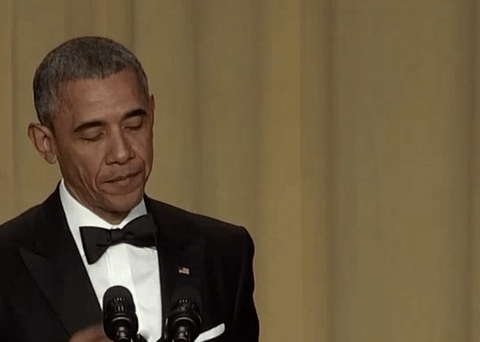
It's her Asian side that might stoke the xenophobia that caused the whitelash red wave of 2016; y'know, because she's going to be subject to nearly the same misogyny Hilary was.
As an Asian-American, Kamala Harris and Andrew Yang weren't just the two candidates I identified most with, they were the best candidates in that primary, period. But they got dismissed and belittled so immensely because of the need to appeal to milk-toast whiteness. Republicans pander hard to grab minority votes, Democrats just avoid putting any minorities in significant positions influence. Don't believe me? Seen any LBGTQ+ positions in real moving and shaking positions?
The DEI stuff the right is going to criticize the entire scope and sequence of how Kamala became the candidate isn't good or fair, but it's not entirely wrong. Because of just how hollow the Democratic Party treats anyone with the poor affliction of being a minority.

There's a key part of the South Asian diaspora Biden lost exactly that Kamala herself is a part of, which makes things interesting to say the least..
Kamala does have the best policy on Israel of any candidate, but that's not saying much since her policy is essentially Obama-lite.
But that means she might lose her own identity vote on just that considering how abhorrently Islamophobic naturalized Indian-Americans have gotten in their support of Narendra Modi
youtube
I don't care how effective the Quadrilateral Security Dialogue has been at curbing Chinese aggression, the Nationalist imagery isn't a good sign for any society, really.
Especially when Muslim civil rights in India have all but evaporated. Nikki Haley wasn't particularly bad on Muslim civil rights compared to other Republicans, even as a half-Indian, she didn't buddy up to Modi (probably because he's done more to encourage gender-based violence in India than stop it), and I expect Kamala to actually get the misogynistic slander from conservative Indians because the hyperpatriarchy only comes when it comes to the opposition.
Being half Brahmin though certainly can't hurt her chances with her Hindu base, right? Well, Hindu men certainly have deeper roots in the red pill movement then we'd like to believe, and the first ones they point the finger towards are Hindu women that didn't choose them. Nikki Haley was polling better but Vivek Ramaswamy ate up her press pretty handily. Everyone sees Asian feminine beauty as valuable, but our misogynistic standards prevent us from seeing that type of ethnic image as leadership-worthy.
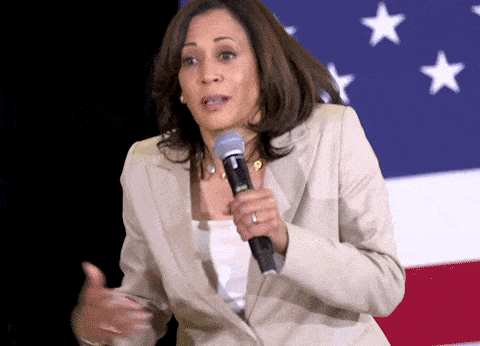
At least it's not Gavin Newsom. But that might not be enough for South Asian American males dissatisfied with their lot in life. Trump's message is appealing to us because it feeds into our vanity and takes responsibility off us as to why our sisters are meeting the model minority myth and we aren't. While we're not solely to blame, at least the right has some crazy narrative that explains why life didn't turn out to what was expected of us, even if that narrative twists it in a way that will end up just making us feel more isolated, because the right has the most racist women in the country, bar-none.
Well, women on both sides of the political spectrum are equally pretty racist in their courtship preferences, it's just liberal women will explain things in vague externalities and icks rather than being a sign for public restrooms in pre-1963 America.
In either case, this is a biracial black woman who was never in touch with the struggles of an Asian man, never really having been related to one even though she's an Asian woman. To a lot of Asian men, Trump is just more of what we expect of the lunacy of American politics, versus Kamala might be one of those people who actively makes us feel subhuman by being of the same race but still treating us as less than, like many desi women have been doing since biracial marriages within 1st generation South Asian Americans began getting normalized.

The normative view has to become where femininity isn't inherently more attractive than masculinity, especially so that women aren't just fit to be more educated and start making more, but actually lead society in meaningful ways.
I think if you're an AAPI in any capacity and you're not voting for Kamala Harris, you're missing the point somehow. But we're not the movers and makers of these elections, because we always reside in states that are firmly blue or red (well, at least until 2016 when Georgia did a thing). Kamala Harris's black vote definitely extends further than Biden's, but by less than makes actual sense. Can't do much worse than Biden on the Hispanic vote, but Kamala Harris if anyone is how you do that.
So if there's fundamentally just about how identity works in America, we will have a POTUS 47 in 2025. But we've learned the two decades in America has been anything fair to identity. Heck, as a Muslim teacher of a liberal arts content area in a red state I feel at the time. My supervisors won't make exceptions for me they readily make for anyone else, not that they were requirements to begin with, just because my identity bears the ugliest parts of the model minority myth. I don't look Asian enough to be Asian, and the media makes my ethnic identity look to threatening to be trusted with novel ideas, at least.

That's at least something this candidate and I have in common. Biraciality and Multiethnicity isn't well understood in our discussions of intersectionality in social and political discourse. The only people that try to make sense of it are the ones that actively try to erode the ethnic barriers enclaves self-segregate on. Kamala has had to think about that because it's a fundamental part of her identity.
I'm not voting on identity or identity politics, as the right would claim I will. I'm voting because at least this candidate has the capacity to understand me, because they're not a white, entitled, spoiled brat that tried to overthrow the government when he didn't get his way. Y'know, fundamental stuff like that.
Because I'm still American through-and-through, regardless of what my ethnic background is. What's more American than having a minority prosecutor in a liberal enclave? That's literally one of the top 5 career options every desi child is given when they think about their careers.

So yeah, Kamala2024. Bite me.
#politics#american politics#us politics#identity politics#Kamala Harris#2024 election#democratic party#biden administration#joe biden#election 2024#Youtube
23 notes
·
View notes
Text
The militant attack in Indian-administered Kashmir that killed 26 tourists last month was the first major terrorist incident in the region since February 2019, when a suicide bombing attributed to the Pakistan-based group Jaish-e-Mohammed struck an Indian police convoy in Pulwama.
Shortly after the recent attack in Pahalgam, Indian Prime Minister Narendra Modi pledged to pursue the militants and their backers to the “ends of the earth.” Early Wednesday morning local time, India launched a barrage of missiles into Pakistani-administered Kashmir and the neighboring province on Punjab. Pakistan has resorted to artillery fire against Indian positions along the Line of Control, the de facto international border in disputed Kashmir.
There is little question that Pakistan will retaliate against this initial Indian missile strike, driven by several factors. First, the Pakistani military, which has long dominated the country’s politics, cannot let an attack on its own territory from its principal adversary go unanswered. Second, though Pakistan has an elected government, Prime Minister Shehbaz Sharif is beholden to Pakistan Army chief Asim Munir.
The military leader is known to be bellicose toward India, as evinced in a speech he gave barely a week before the Pahalgam attack. Echoing the sentiments of Pakistan’s founder, Muhammad Ali Jinnah, Munir invoked the “two-nation theory”—the idea that Hindus and Muslims are two distinct, primordial nations and cannot coexist.
Will Pakistan’s likely retaliation send the countries hurtling into an escalatory spiral culminating in the use of nuclear weapons? This fear has long haunted strategists abroad, though both Indian and Pakistani officials have remained sanguine about such risks. There are reasons to remain optimistic that neither side will escalate toward a nuclear exchange. Neither India nor Pakistan wants to be labeled as the first violator of the post-Hiroshima nuclear taboo. Further, the use of nuclear weapons would lead to untold devastation in both countries.
Despite these seemingly rational arguments, there is also some reason to fear a conflict spiral. First, Pakistan’s nuclear doctrine explicitly eschews a no-first-use policy. If faced with what it deems to be an existential threat, Islamabad reserves the right to use nuclear weapons. Second, Pakistan has short-range tactical nuclear weapons that are forward-deployed and presumably intended to blunt a significant Indian conventional incursion.
Meanwhile, though India long upheld a no-first-use doctrine, it has in recent years informally dialed back its stance. Much ambiguity still surrounds India’s operational doctrine, even though some scholars have argued that India is seeking actual first-strike capabilities.
The United States has played a key role in containing and defusing past India-Pakistan crises, including those that took place after the two countries crossed the nuclear threshold in 1998. This time, however, Washington is focused on a host of other domestic and foreign-policy issues; it may not be willing or able to devote time and resources to prevent further escalation.
Since President Donald Trump took office in January, the United States has not had an ambassador in New Delhi, and no assistant secretary of state for South and Central Asia has been confirmed. As a result, it has mostly fallen to Secretary of State Marco Rubio—now also the interim national security advisor—to try to get both parties to exercise appropriate restraint. Whether Rubio’s call is heeded in both capitals remains an open question.
In an unprecedented move, Iranian Foreign Minister Abbas Araghchi visited Pakistan this week to defuse tensions. But his attempt will most likely prove quixotic: Despite Iran’s long-standing ties to both India and Pakistan, it lacks the diplomatic or political clout to serve as a viable interlocutor.
Under these circumstances, if Pakistan’s retaliatory actions prove to be reckless and inflict substantial damage on Indian military or civilian entities, an escalatory spiral could ensue. India, grappling with an aggrieved public, will feel that it has little choice but to pursue further retaliation. Such tit-for-tat responses could result in what security scholars call inadvertent escalation—a specter that long haunted Western Europe as it confronted the Soviet threat and now looms over South Asia.
4 notes
·
View notes
Text
Robert Reich at Substack:
Friends, Elon Musk and entrepreneur and investor David Sacks reportedly held a secret billionaire dinner party in Hollywood last month. Its purpose: to defeat Joe Biden and reinstall Donald Trump in the White House. The guest list included Peter Thiel, Rupert Murdoch, Michael Milken, Travis Kalanick, and Steven Mnuchin, Trump’s Treasury secretary.
Meanwhile, Musk is turning up the volume and frequency of his anti-Biden harangues on his X platform. According to an analysis by the New York Times, Musk has posted about President Biden at least seven times a month, on average, this year. He has criticized Biden on issues ranging from Biden's age to his policies on heath and immigration, calling Biden "a tragic front for a far left political machine.” The Times analysis showed that over the same period of time, Musk has posted more than 20 times in favor of Trump, claiming that the criminal cases Trump now faces are the result of media and prosecutorial bias. This is no small matter. Musk has 184 million followers on X, and because he owns the platform he’s able to manipulate the algorithm to maximize the number of people who see his posts.
No other leader of a social media firm has gone as far as Musk in supporting authoritarian leaders around the world. In addition to Trump, Musk has used his platform in support of India's Narendra Modi, Argentina's Javier Milei, and Brazil's Jair Bolsonaro. Some of this helps Musk’s business interests. In India, he has secured lower import tariffs for Tesla vehicles. In Brazil, he has opened a major new market for Starlink, SpaceX’s satellite internet service. In Argentina, he has solidified access to lithium, the mineral most crucial to Tesla’s batteries. Musk has slammed Biden for his decisions on electric vehicle promotion and subsidies, most of which have favored unionized U.S. auto manufacturers. Musk and his Tesla are viciously anti-union. But something deeper is going on. Musk, Thiel, Murdoch, and their cronies are backing a movement against democracy. Peter Thiel, the billionaire tech financier, has written, “I no longer believe that freedom and democracy are compatible.”
@Robert Reich nails it with this piece: Oligarchs are joining up with the anti-democracy MAGA movement to look out for themselves and aid the collapse of freedom.
#Elon Musk#Peter Thiel#David Sacks#Donald Trump#Authoritarianism#Robert Reich#Substack#Rupert Murdoch#Michael Milken#Travis Kalanick#Steven Mnuchin#Jamie Dimon
8 notes
·
View notes
Text
The Grand Inauguration of Rising Rajasthan Global Investment Summit 2024: Col Rajyavardhan Rathore
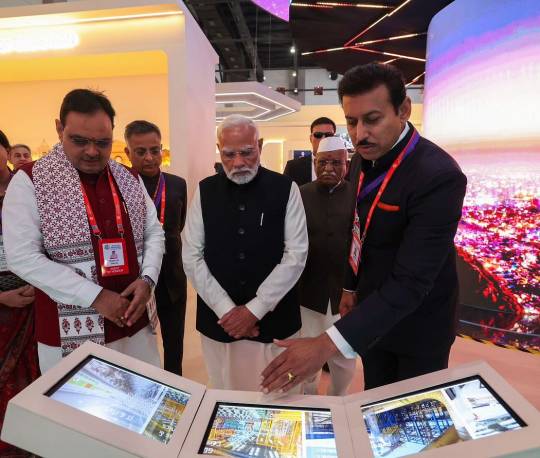
The Rising Rajasthan Global Investment Summit 2024, a flagship event to drive economic transformation in Rajasthan, kicked off with grandeur in Jaipur. Inaugurated by Prime Minister Narendra Modi, the summit is poised to position Rajasthan as a leading investment hub. Col Rajyavardhan Rathore, a key figure in promoting this initiative, emphasized the summit’s role in shaping the future of Rajasthan’s economy.
A Visionary Start: The Inauguration Ceremony
The inauguration ceremony was nothing short of a spectacular display of Rajasthan’s cultural richness and economic ambitions. PM Modi, along with dignitaries from across the globe, lit the ceremonial lamp, marking the beginning of a three-day extravaganza aimed at attracting investments across various sectors.
Keynote by PM Modi

Col Rajyavardhan Rathore’s Address

Key Themes of the Summit
1. Investment in Renewable Energy
Rajasthan, blessed with ample solar and wind resources, aims to be a leader in renewable energy. The summit highlights projects aimed at making the state a green energy hub.
2. Boosting Tourism and Heritage
Rajasthan’s rich cultural heritage is a focal point, with plans to modernize infrastructure while preserving its historical charm.
3. Technology and Startups
The event places significant emphasis on fostering innovation through support for startups, IT hubs, and the burgeoning AVGC (Animation, Visual Effects, Gaming, and Comics) sector.
4. Agricultural and Rural Development

Event Highlights
International Participation
The summit sees delegates from over 30 countries, including CEOs, diplomats, and investors, exploring collaborations in various industries.
Policy Announcements
The Rajasthan government has introduced policies tailored to attract investments, including tax incentives, streamlined approvals, and support for startups and MSMEs.
Exhibition and Networking Opportunities
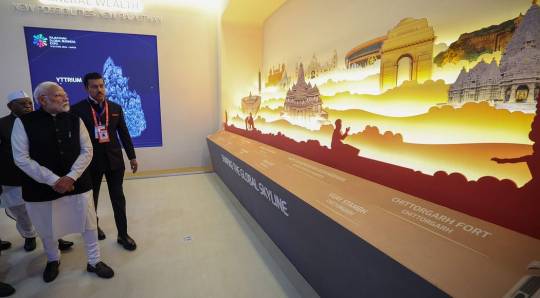
Impact on Rajasthan’s Economy
Billions in Investment Commitments
The summit is expected to secure significant investments in key sectors, boosting Rajasthan’s GDP and job market.
Job Creation
With investments in industrial hubs, green energy projects, and tourism, thousands of job opportunities are set to emerge, particularly for the youth.
Infrastructure Development
Infrastructure upgrades, including smart cities, roads, and industrial parks, will lay the foundation for sustained growth.
Col Rajyavardhan Rathore: Championing Rajasthan’s Growth

A Bright Future for Rajasthan
The Rising Rajasthan Global Investment Summit 2024 is more than an event; it’s a movement to propel Rajasthan into a new era of growth and global recognition. With leaders like Col Rajyavardhan Rathore and the support of the central government, the future looks exceptionally promising for the state and its people.
4 notes
·
View notes
Text
Rising Rajasthan Global Investment Summit 2024: Col Rajyavardhan Rathore
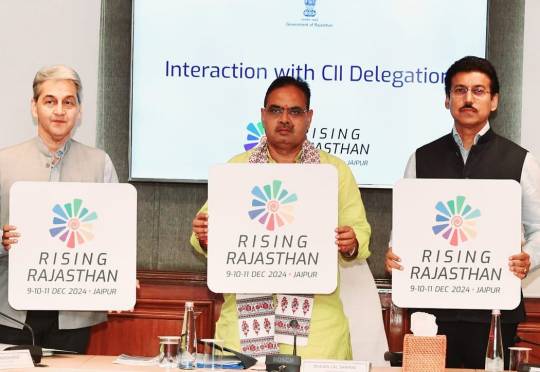
The Rising Rajasthan Global Investment Summit 2024 commenced on December 9, 2024, in Jaipur, inaugurating a three-day event aimed at showcasing Rajasthan’s potential as a premier investment destination. The summit brings together global investors, industry leaders, and policymakers to explore opportunities across various sectors.
The Rising Rajasthan Global Investment Summit 2024, held in Jaipur, has set the stage for Rajasthan’s emergence as a global investment powerhouse. With leaders, entrepreneurs, and policymakers converging to envision a brighter economic future, the summit reflects the state’s ambitions to lead in innovation and growth. Colonel Rajyavardhan Rathore, a prominent voice in Rajasthan’s development, highlighted the transformative potential of this landmark event.
Rajasthan: A Land of Opportunities
Known for its rich heritage and cultural diversity, Rajasthan is now making significant strides in economic development. The state, with its abundant resources and strategic location, aims to attract global investors by showcasing its potential in various sectors.
Key Objectives of the Summit
1. Attracting Investments Across Sectors
The summit focuses on industries such as renewable energy, tourism, IT, startups, and agriculture, providing a platform for stakeholders to explore collaborations.
2. Promoting Sustainable Development
With a strong emphasis on sustainability, the summit aims to balance economic growth with environmental responsibility, positioning Rajasthan as a leader in green energy.
3. Creating Employment Opportunities
By facilitating large-scale investments, the event is expected to generate thousands of jobs, particularly for Rajasthan’s youth.
Highlights of the Event
1. Inauguration by PM Narendra Modi
The summit was inaugurated by Prime Minister Narendra Modi, who emphasized Rajasthan’s potential as a global investment destination and unveiled key development projects.
2. Col Rajyavardhan Rathore’s Visionary Leadership
Col Rathore played a pivotal role in organizing the summit, aligning it with the aspirations of Rajasthan’s people. In his address, he stated: “Rajasthan is ready to redefine its economic landscape. This summit is a testament to our resilience and readiness to lead.”
3. International Participation
Delegates from over 25 countries attended, bringing a global perspective to discussions and forging international partnerships.
4. Policy Announcements
The Rajasthan government unveiled investor-friendly policies, including tax incentives, streamlined approval processes, and infrastructure development plans.
Key Sectors in Focus
1. Renewable Energy
Rajasthan, with its abundant solar and wind resources, is a prime location for green energy projects. The summit highlighted initiatives to make the state a leader in renewable energy.
2. Tourism and Heritage
The event underscored Rajasthan’s potential as a global tourism hub, with investments aimed at upgrading infrastructure while preserving its cultural heritage.
3. Startups and IT
Encouraging innovation and technology, the summit showcased the state’s burgeoning startup ecosystem and plans for IT hubs.
4. Agro-Industries
The agricultural sector remains a cornerstone of Rajasthan’s economy, and the summit focused on modernizing agro-industries and boosting food processing.
Impact on Rajasthan’s Economy
Billions in Investment Commitments
The summit secured substantial investment pledges, set to drive economic growth and industrialization across the state.
Infrastructure Development
Key projects, including industrial parks and improved connectivity, were announced to enhance Rajasthan’s appeal to investors.
Job Creation and Skill Development
With new industries entering the state, a significant boost in employment opportunities is anticipated, along with initiatives to upskill the workforce.
Col Rajyavardhan Rathore: A Catalyst for Change
As a visionary leader, Col Rajyavardhan Rathore has been instrumental in Rajasthan’s development journey. His relentless efforts to attract investments and empower local communities have made him a key figure in the state’s transformation.
A Bright Future for Rajasthan
The Rising Rajasthan Global Investment Summit 2024 marks a turning point in the state’s economic narrative. With strategic leadership from personalities like Col Rajyavardhan Rathore and support from the central government, Rajasthan is poised to achieve unprecedented growth and prosperity. The summit is not just an event but a milestone in Rajasthan’s journey toward global recognition as a leading investment hub.
4 notes
·
View notes
Text
[ad_1] Reliance Jio Infocomm chairman Akash M Ambani | Image: PTI3 min read Last Updated : Oct 15 2024 | 12:41 PM IST Speaking at the inauguration of the India Mobile Congress on Tuesday, the leaders of Reliance Jio and Bharti Airtel called for the government to embrace a holistic artificial intelligence (AI) strategy and ensure all potential satellite communication providers are subject to the same rules as traditional telecom operators. Reliance Jio Infocomm chairman Akash M Ambani and Bharti Enterprises chairman Sunil Bharti Mittal outlined their suggestions for the evolving sector in their address to a major gathering of national and global delegates from the telecom sector, including Prime Minister Narendra Modi and telecom minister Jyotiraditya Scindia. Click here to connect with us on WhatsApp Market leader Reliance Jio wants the government to adopt a holistic AI strategy focused on self-sufficiency. "AI is absolutely critical for realising our dreams of a viksit Bharat by 2047. Therefore, India under your leadership should urgently embrace AI with a holistic strategy driven by maximum Atmanirbhar efforts," Ambani said. He stressed that Jio remains committed to democratising AI and offering powerful AI models and services to Indians at affordable prices. "Towards this end, we are laying the groundwork for a national AI infrastructure," he emphasised. Ambani noted that India needs to accelerate talent generation on a scale necessary to make the country a global leader in AI. Addressing the concern over how AI might affect the job market, he remarked that some existing jobs will evolve while many new and exciting opportunities for employment and entrepreneurship "will be created rapidly, just like during the adoption of the computer and the internet." Additionally, Ambani urged the government to expedite the draft of the 2020 data centre policy. "Indian data should remain in Indian data centres. Therefore, Indian companies ready to set up AI and machine learning data centres should receive all necessary incentives, including incentives for power consumption," he added. Satcom debate Bharti Airtel has called on the government to ensure that all potential satellite communication providers operate under the telecom operator framework. Drawing the Prime Minister's attention to the ongoing global debate on how fast-growing satellite communication services can coexist with terrestrial networks, Mittal highlighted that telecom companies worldwide have played a crucial role in connecting the globe. Referring to Indian telcos, he noted that they would extend satellite services to the remotest parts of the country. However, Mittal stressed that satellite companies aiming to serve "elite, retail customers" in urban areas must take a telecom licence like everyone else. His comments appear directed at foreign entities such as Starlink and Project Kuiper, which are seeking entry into the Indian market and whose applications are currently being reviewed by the government. "They must adhere to the same conditions, including buying spectrum like telecom companies, paying the licence fees, and securing their networks. This is a simple solution that can be adopted on a global scale, and India can lead the way," Mittal said. The government is currently in the process of opening up satellite communication services and has already granted GMPCS licences to Bharti Group-backed Eutelsat OneWeb and Reliance Jio’s satellite arm, Jio Space Limited. However, applications from foreign entities have faced hurdles due to technicalities and security concerns. Starlink is the satellite internet constellation operated by SpaceX, the American spacecraft manufacturer and satellite communications company owned by US tech billionaire Elon Musk. Project Kuiper, a subsidiary of Amazon, was established in 2019 to deploy a large satellite internet constellation to provide low-latency broadband connectivity. First Published: Oct 15 2024 | 12:41 PM IST
2 notes
·
View notes
Text
How much foreign policy is *not* morality or even the primary axis of social change is highly underappreciated in discussions about it. The foreign policy of states is just one of many gears in the machine of society, it does not in any way rule the roost or determine the fate of societies. As such it cannot be and should be the load bearing part of your social morality - its a tool in the toolkit. "Is Saudi Arabia and ethical sta-" doesn't matter, forgetaboutit. Since your foreign policy is not changing it as a state, instead you ask what can we do to make each other's people better off, and you work from there. The idea that democracies and dictatorships should not trade, have security arrangements, work together towards common goals, etc is a non-starter for a functioning system.
Of course, there is one exception to this, and that is war; wars absolutely do rule the roost of human fate. Which imo is the crux of what foreign policy should be about - "peace and trade above all". Anything that isn't those is secondary (maybe collective action problems like environmental policy, but not on topic rn). Work with oppressive countries, deal with crazy legal systems, deal with lying trade partners, etc. Whatever keeps every nation at the table. The idea that because Modi is "bad" the US should want India to be *weaker* is a misunderstanding of what the goals are.
(None of this means no morality ever matters - it just has to be foreign policy aligned. Its why Saudi Arabia killing Jamal Khashoggi was a big deal - he was a US resident and an international journalist, it violated the rules of the system. Its why that was treated differently, it was 'on topic')
26 notes
·
View notes
Text

Drone to be launched from Su-57 would have already been developed
The idea would be to launch a swarm of drones from the Russian fifth-generation fighter.
Fernando Valduga By Fernando Valduga 28/11/2023 - 10:10am Military
Merely illustrative photo of a Su-57 flying with an Okhotnik drone.
The fifth-generation Su-57 fighter will have in the near future the ability to use mini-drones that the aircraft will carry on board. Mini-UAVs have already been created for various purposes, which can be placed both at an external fixed point and in the internal compartment and then launched into the air.
The fighter will launch a group of drones at once and control them, informs the agencyRIA Novosti.
The mini-UAV has the direct task of carrying out attack operations, performing reconnaissance and electronic suppression of enemy attack weapons. The launch of dozens of drones by a group of Su-57 will provide a breakthrough in air defense, overloading their information channels and reaching air defense systems both with the help of drones and with their own means of destruction.
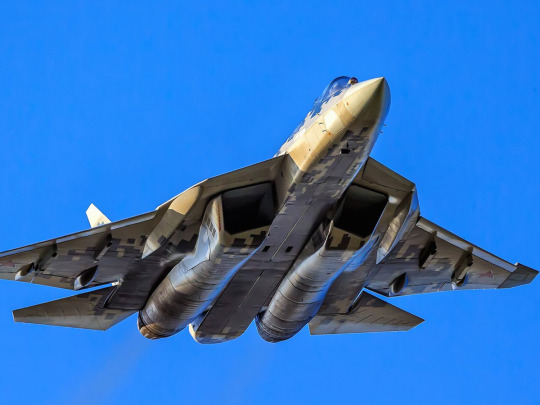
In recent years, the development of unmanned technology, both in the civil and military fields, has grown at a rapid pace. In November 2021, Viktor Kladov, Director of International Cooperation and Regional Policy at Rostec State Corporation, said that as early as the next decade, manned combat aircraft will be gradually replaced by unmanned drones. This is due not only to the technological advantages of drones, but also to their ability to work in collaboration with other drones and manned aircraft.
The state-owned company is actively developing unmanned aerial vehicles (UAVs) capable of exchanging information and collaborating with Checkmate and Su-57. This opens up new perspectives for the creation of the so-called "drone swarm" - a concept in which several drones work together to perform different tasks in combat conditions.
A Su-57 fighter will be able to carry more than a dozen reconnaissance and attack drones and unmanned electronic warfare systems in the internal compartment of the fuselage. The UAVs will interact through secure communication channels both with the on-board complex of the carrier aircraft and with each other. One of the main advantages of this approach is the ability to effectively carry out complex missions that were previously inaccessible to combat aircraft. A swarm of drones can perform reconnaissance, attack targets, maintain air superiority and perform other tactical missions.

Previously, the Federal Intellectual Property Service issued the RU2807624 patent to the United Aircraft Corporation for a two-seat multifunctional aircraft for use as an air control center and ensuring interaction between aviation and military formations with network-centric methods to control weapons objects on the battlefield. It is assumed that due to a wide range of communication media, including satellite, high-speed communication channel and installation of equipment for group information transmission over long distances, the aircraft will also be used as a control point for unmanned aerial vehicles.
Tags: Military AviationDronesRFSAF - Russian Federation Aerospace Force/Russian Aerospace ForceSukhoi Su-57 Felon
Sharing
tweet
Fernando Valduga
Fernando Valduga
Aviation photographer and pilot since 1992, has participated in several events and air operations, such as Cruzex, AirVenture, Dayton Airshow and FIDAE. He has work published in specialized aviation magazines in Brazil and abroad. Uses Canon equipment during his photographic work in the world of aviation.
Related news
HELICOPTERS
Bell is selected for the X-Plane conceptual phase of DARPA's SPRINT program
27/11/2023 - 22:52
MILITARY
IMAGES: Philippine and U.S. Air Forces successfully conduct joint maritime patrol
27/11/2023 - 22:02
Prime Minister Modi's outcast in a Tejas LCA took place in Bengaluru, where Hindustan Aeronautics Limited (HAL) is headquartered (Photo: Ministry of Defense of India)
MILITARY
Indian Prime Minister flies, and the Indian Air Force will acquire 97 more LCA Tejas
27/11/2023 - 17:00
MILITARY
Elbit Systems will provide self-protection suites for A330 MRTT aircraft
27/11/2023 - 15:05
Among the newly acquired military equipment are included 11 Mil Mi-24P Hind attack helicopters that will be updated in two batches. (Photo: Ministry of Defense of Serbia)
HELICOPTERS
Serbian Armed Forces receive 11 Mi-24P attack helicopters purchased from Cyprus
27/11/2023 - 14:37
AERONAUTICAL ACCIDENTS
U.S. Navy starts investigation and releases images of the P-8 that sweeped the runway and stopped inside the sea in Hawaii
27/11/2023 - 10:16
7 notes
·
View notes
Text
Colonel Rajyavardhan Rathore Participates in "Sankalp Se Siddhi" Professional Meet Celebrating 11 Years of Modi Government

BJP State Headquarters, Jaipur
Colonel Rajyavardhan Singh Rathore, a prominent leader of the Bharatiya Janata Party (BJP) and former Olympian, actively participated in the "Sankalp Se Siddhi" (From Resolve to Achievement) Professional Meet organized to mark the completion of 11 successful years of the Modi government under the visionary leadership of Prime Minister Shri Narendra Modi.
The event was held at the BJP Rajasthan State Headquarters in Jaipur, where party workers, leaders, and professionals from various fields discussed the remarkable achievements of the Modi government over the past 11 years.
Colonel Rathore emphasized that "Under PM Modi’s leadership, India has achieved unprecedented success in development, security, and self-reliance. Our government has taken the nation to new heights by following the path of 'Sankalp Se Siddhi'."
The meet included detailed discussions on key policies, schemes, and future strategies. Colonel Rathore reaffirmed his commitment to strengthening BJP’s organizational efforts and contributing to public welfare initiatives.
0 notes